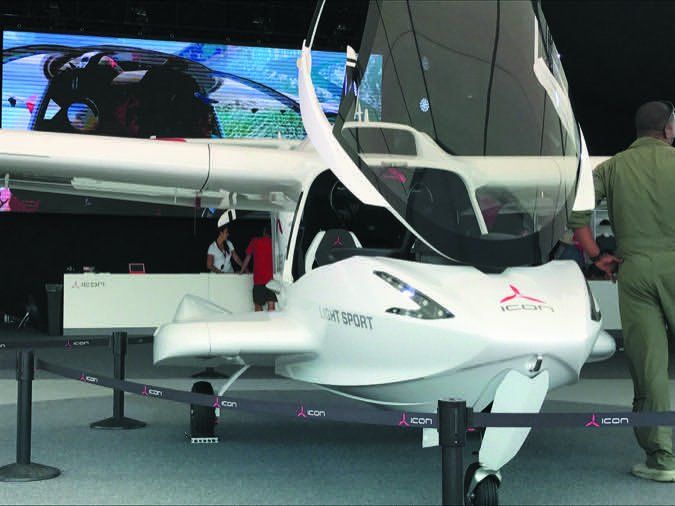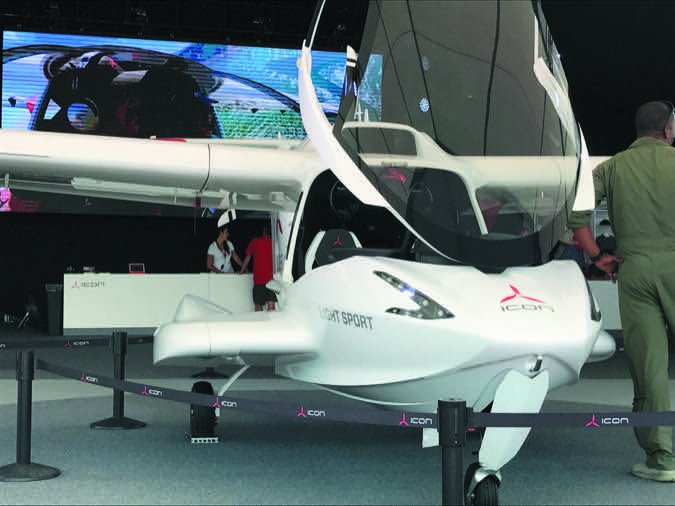
We’ll start with avionics in our annual recap of AirVenture in Oshkosh, Wisconsin, which according to EAA had a record-breaking attendance of 590,000 people. That’s up 5 percent over last year.
We knew autopilots would be front and center at the show, but we didn’t expect to see six of them, including the two systems from Garmin we covered on page 4.
As promised, TruTrak showed up with an STC for the Vizion autopilot. The STC only covers the Cessna 172 Skyhawk and 177 Cardinal, but TruTrak says it’s getting busy with more approvals. Other than Dynon’s D10A, third-party EFIS compatibility is lacking, for now, which could put the brakes on for some buyers looking for a complete interface. TruTrak’s Andrew Barker told us to expect more announcements for third-party compatibility soon, which in our view has to include Garmin’s G5 flight instrument. It’s become the dominant low-cost EFIS solution for the market’s lower end.
The STC Group (an outside company established to work on certifications) announced it was awarded an STC for the experimental Trio Pro Pilot autopilot for the Cessna 172, 175 and 182 models. The Cessna Cardinal and Piper Cherokee will be next, the company said. Both the TruTrak and Trio systems are priced below $10,000 and various versions of installation kits are available, depending on aircraft configuration and whether it currently has an autopilot.
The other shockers came from BendixKing (see the sidebar on page 17) and Genesys Aerosystems, who both announced new autopilots. Genesys is working on the clean-sheet S-TEC 3100 digital autopilot, says it expects STC certification in early 2018 and is targeting the Cessna 182, 210, Beech Bonanza and Piper Saratoga for initial applications.
No pricing was announced for the 3100, although Jamie Luster from Genesys said the system price will be competitive with other autopilots having similar capabilities. This includes envelope protection, voice annunciations, underspeed and overspeed warnings and a variety of other functions the market expects from a new autopilot.
Is there really a demand for all of these autopilots in the current market? We doubt it, but it’s good to have choices and we welcome the competition.
ADS-B Solutions
We anticipated some action on the ADS-B front and it was there. Garmin was showing its latest GDL82, a mandate-compliant two-piece (transmitter and GPS antenna) remote ADS-B Out system. Priced at $1795, the system is a low-flying 978 UAT solution (it doesn’t have ADS-B In) that has a built-in WAAS GPS.
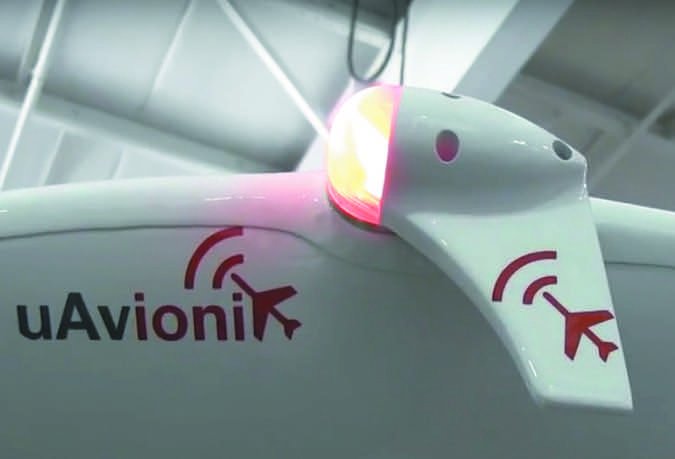
Garmin is marketing the GDL82 to the market’s lower end, which includes minimally equipped aircraft without WAAS GPS systems, plus buyers who have been reluctant to buy mandate-approved solutions because of complex installations.
Garmin believes the GDL82 has a simpler installation than other systems because the transmitter connects in line with the aircraft’s existing transponder and L-band antenna system.
Is this the innovative ADS-B solution the market has been waiting for? We don’t really think so and expected this simpler approach to mandate compliance a while ago. As for price, it’s budget-based at sub-$2000, but after installation the bottom line will still flirt with $3000.
The real innovator in the ADS-B market was uAvionix. It surprised showgoers with its new SkyBeacon, a smart ADS-B Out system that replaces a navigation light with an LED lamp and a built-in miniature ADS-B transmitter. It also has a self-contained ADS-B blade antenna that’s molded into the housing. uAvionix says the system will work with a smartphone app for programming aircraft-specific ADS-B data and although a price hasn’t been finalized, it’s expected to be around $1400. As for installation, there shouldn’t be much to it—perhaps not even enough to involve an avionics shop. The idea is to use the existing lighting wiring (power and ground), fasten the device in place, program it and fly it away. FAA certification hangs in the balance, of course, but we think the agency should see this simple product as an easy way to get more aircraft ADS-B Out-equipped. We’ll be watching this one with interest and so should you.
As if there aren’t enough portable ADS-B In traffic and weather devices to choose from, ForeFlight brought the new miniature Scout to the show, which was developed in collaboration with uAvionix. The tiny $199 Scout is roughly 3 inches by 1 inch, weighs less than an ounce and uses a micro-USB connector. It works on both 978 and 1090 MHz frequency bands.
The Scout sure looks a lot like the PingBuddy portable device (uAvionix was the creator of that, too) that ForeFlight competitor Seattle Avionics was showing at Sun ‘n Fun last spring. Although well-received, the PingBuddy—which was to have an open architecture that could work with a variety of tablet apps—never made it to market. The Scout, unfortunately, has a closed architecture and officially only works with the ForeFlight Mobile app, displaying traffic and weather within the program. We’ll get a closer look at the interface in an upcoming portable ADS-B roundup article in Aviation Consumer.
Another Shot Of Diesels
If you’ve written off Jet-A-burning diesel engines for the masses, the technology could actually have a bright future. Continental Motors reported in a press conference that it’s seeing more uptake of diesels in the North American flight training market. In an interview with sister publication AVweb.com, Continental’s CEO, Rhett Ross, suggested there’s sizable demand for an engine with increased efficiency in the training market, even though the initial investment for a diesel upgrade isn’t the most economical. The training market isn’t the only focus.
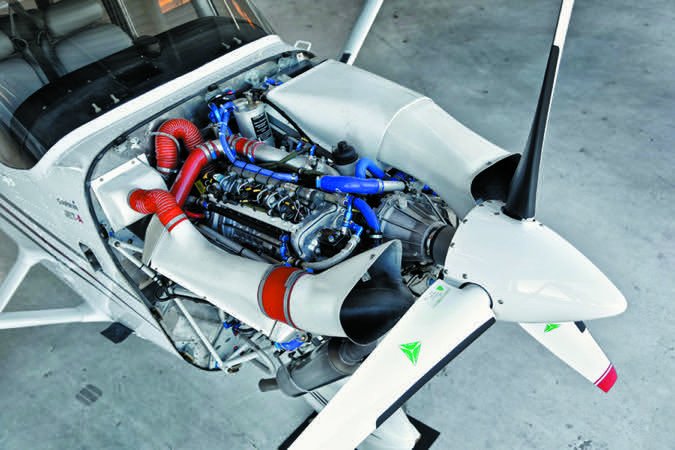
Although previously there has been little demand for a high-output retrofit diesel, the company is ready for prime time with its CD-300 V-6 diesel engine, which is fully certified.
Speaking of new certifications, Textron brought its newly certified Turbo JT-A Skyhawk to the show. It’s powered by the Continental CD-155, which has a dual-channel FADEC driven by a single power level. The aircraft has a maximum speed of 134 knots, a maximum range of 963 nautical miles, a maximum climb rate of 767 FPM and a 1320-foot takeoff distance. The JT-A Skyhawk has Garmin’s new G1000 NXi integrated avionics, a three-blade propeller and an eye-widening price of $435,000. Whether the JT-A will be embraced by the training market remains to be seen.
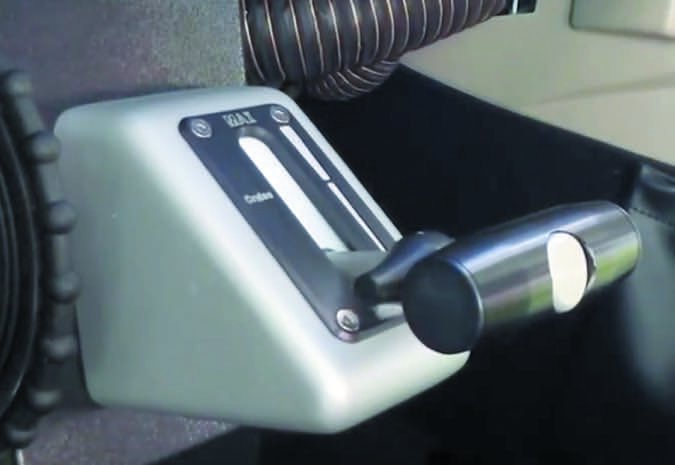
But it wasn’t just Continental diesels in the spotlight. After cooling its heels for a year or so, Engineered Propulsion Systems (EPS) was back at AirVenture and showing off the lightweight horizontally arranged Graflight V-8 diesel engine. Immersed in FAA Part 23 static testing, EPS says it’s working on integrating the engine into a Cirrus SR22, although certification testing is in the early stages and the engine will have other uses, including marine and UAV applications.
The 350-HP engine, which has steel pistons and an iron crankcase, is targeted to have a 3000-hour TBO and, according to EPS, an efficiency that can better other diesel engines by 15 percent. At the show, EPS showed us its efficiency data that compared the Graflight to Continental’s TSIO-550-E avgas engine. At 75 percent power (262 HP), the Graflight’s hourly fuel cost was shown to be $63 per hour, compared to the Continental’s $114 per hour cost. EPS said the Graflight is the cleanest engine ever developed for the GA market—cutting CO2 emissions by 30 percent over comparable avgas engines and by 17 percent over competing diesel engines. No price has been set.
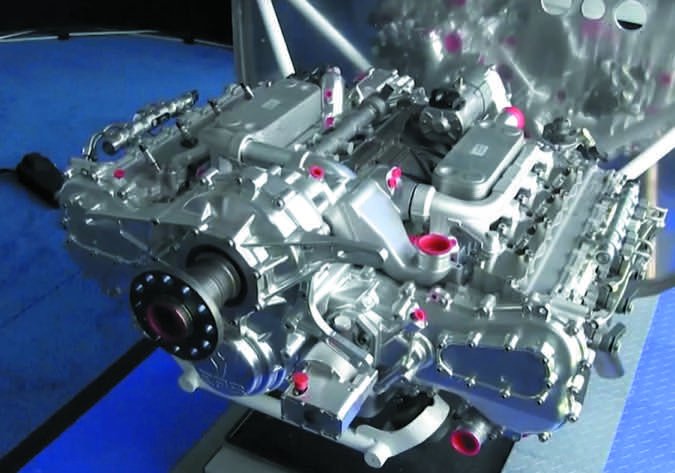
Aircraft Developments
Last summer Piper was celebrating the certification and first delivery of its M600 turboprop single, but at AirVenture this summer it announced that it has grounded the entire fleet of M600s. The trouble began after Piper discovered a single, non-conforming aft wing spar from its supplier, which prompted a mandatory service bulletin. The inspection, which can be done in one day, applies to all 38 M600s in service.
Amidst the hustle and bustle of big military iron at the show’s Boeing Plaza, Stratos Aircraft was showing off the model 714 proof of concept personal jet it flew into the show. Using carbon fiber construction, the maximum cruise speed was an advertised 415 knots (at 41,000 feet) and the range is 1526 nautical miles with four people aboard. The prototype we looked at was powered by a Pratt & Whitney Canada JT15D-5, but the company said it likely won’t be the engine that’s used in the certified aircraft. Swapping out different engines is supposed to be easier because the airframe is assembled with a replaceable steel truss that attaches the tail to the aircraft, making it a modular design. This also makes it possible to tweak the tail section for optimizing performance, as one example.
Is there really a market for another single-engine personal jet? Like Cirrus with its Vision jet, Stratos is targeting owners of turboprop singles looking for more speed and efficiency. We think it will be a long, expensive road to certification for Stratos, which is based in Redmond, Oregon, but the company is prepared to offer the aircraft in kit form as a fallback. It’s currently looking for investors,
Finally, the Icon Aircraft tent was jampacked each day as the company flaunted its A5 LSA amphib. It’s ready to start selling the tweaked 2018 model and said it hopes to deliver up to 200 aircraft in the coming year, while also building more training and demo centers around the country.
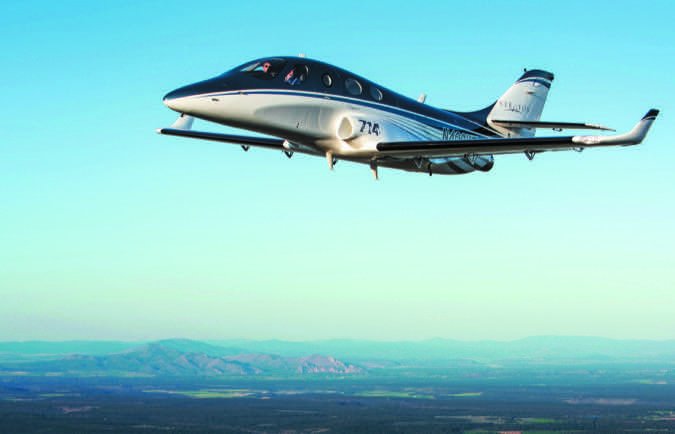
Bendixking Surprises: Autopilot, EFIS, Gadget
Just as the industry all but gave up on BendixKing, it showed up at AirVenture with a handful of new products, including a retrofit autopilot that’s designed to replace the company’s aging fleet of KFC-series autopilots.
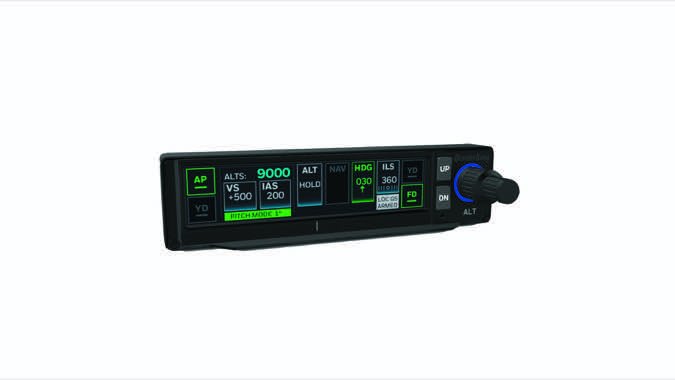
Called the AeroCruze, the KFC230 is focused at replacing the KFC150 and KFC200 autopilots. BendixKing’s AeroCruze product manager, Jeff Kaufmann, told us that since nearly 70 percent of an autopilot’s installed cost includes the replacement of servos and related hardware, the AeroCruze is designed to retain the existing autopilot servos. In a bold move and as part of an AeroCruze retrofit, BendixKing is offering a two-year warranty on these existing servos as long as the installing shop verifies they are in good working order.
The KFC230 requires a digital attitude source for roll and pitch input, which can come from the company’s KI300 electronic flight instrument (more on that in a minute) or from third-party EFIS systems including the Aspen Avionics Evolution and Garmin G500/600. As for the autopilot computer, it’s a stack-mounted hybrid controller with color touchscreen, plus it has knobs and buttons. BendixKing is targeting an upgrade price of $10,000 and says it expects to start shipping the product in the middle of 2018.
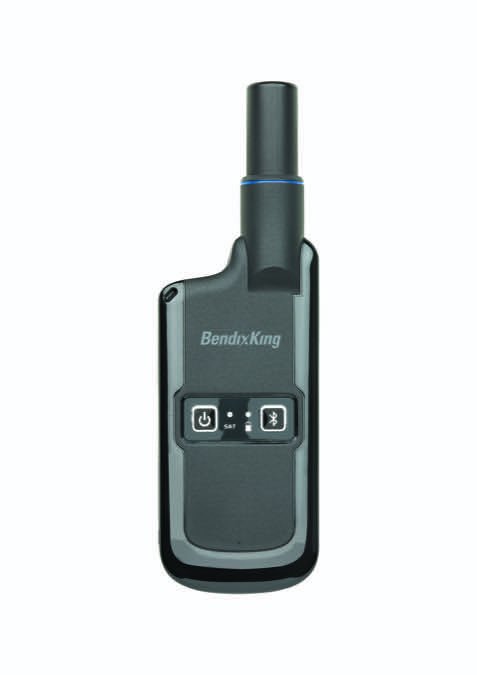
We’ve seen the KI300 EFIS before because the company introduced it at AirVenture two years ago, but hasn’t delivered it. This year it brought the instrument back in a different form. “We’ve listened to customer requests for additional features so we reworked the instrument and added airspeed, attitude and slip indications,” said Kaufmann. The KI300 is intended to drive third-party attitude-based autopilots, plus the company’s own legacy and new AeroCruze systems. The company said it plans to ship the KI300 in September 2017—that’s about the time you’ll be reading this. Will it deliver?
Last is a new personal tracking, texting and SOS device that’s an addition to the company’s AeroWave communication product line. Called the AeroWave Text & Track, the handheld device uses the Iridium satellite network. It can send up to 90 characters and receives up to 140 characters of text, interfaces with a smartphone app via Bluetooth, is priced under $500 and is available now.

